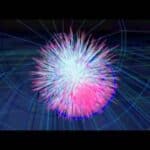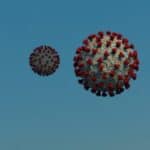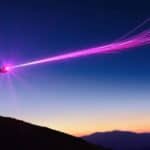UPDATED 5/29
Another capability of 5G. (AR) demonstration in a 5G equipped arena. The audience was surely impressed by the show, but can you just IMAGINE the multiple true agendas behind this technology. Scroll down to see the significance of the Wyvern.

(Mar 25, 2019) On the Opening Day of the 2019 KBO season on Saturday, March 23, SK Telecom brought a mythical dragon-like animal wyvern to the 5G-equipped SK Happy Dream Park, home to SK Wyverns. The large fire-breathing wyvern flying around the park was streamed live though sports broadcasting channels for baseball fans.
To realize the amazing augmented reality(AR) performance, SK Telecom has applied its self-developed AR/VR technologies such as ‘eSpace,’ a hyperspace platform that can replicate the real world into a virtual space, and ‘T real Platform,’ where AR contents can be freely/easily created and shared.
Since launching the world’s first 5G network on December 1, 2018, No.1 Korean mobile operator SK Telecom has been actively developing diverse 5G services including AR and VR to take customer experience to the next level.
Here is SK Telecom’s Press Release about the event
News report about the event:

This technology is NOT NEW and they’re always far ahead of what they tell us. Remember the floating “cities” in China around 2013? Or further back even yet, the hologram PLANES used in 9/11?
“Pay attention to the historical & Alchemical aspects in the photograph below. The Wyvern is also thought to be the source of the Pendragon Sigil of King Arthur, still to this day the Heraldic Sigil of Wales found on it’s National flag. Another interesting point of fact, there’s a medieval term called “Raising the Dragon banner/flag” that in the Ages of Chivalry meant laying aside ALL MORAL CODES to exact utter destruction, desolation, desecration & revenge upon a foe. It was literally giving the Armies of the Kings who invoked it the legal right to descend into their utter bestial nature until vengeance was achieved. 2 Swans were sacrificed & the “spirit” of the Dragon invoked before they went to battle.
Some more history on the Mythology of the Wyvern.” Allison Page Walters
Wikipedia
A wyvern (/ˈwaɪvərn/ WY-vərn, sometimes spelled wivern) is a legendary biped creature with a dragon’s head and wings, a reptilianbody, two legs, and a tail often ending in a diamond- or arrow-shaped tip. A sea-dwelling variant dubbed the sea-wyvern has a fishtail in place of a barbed dragon’s tail.
The wyvern in its various forms is important to heraldry, frequently appearing as a mascot of schools and athletic teams (chiefly in the United States, United Kingdom, and Canada). It is a popular creature in European and British literature, video games, and modern fantasy. The wyvern in heraldry and folklore is rarely fire-breathing like the four-legged dragon. Sometimes modern fantasy book and media authors have wyverns that are frost-breathing or poison-breathing instead of fire-breathing.
Etymology
The current spelling wyvern is not attested before the seventeenth century as “winged two-footed dragon”.[1] According to the Oxford English Dictionary, it is an alteration of Middle English wyver (attested thirteenth century), from Anglo-French wivre (cf. French guivreand vouivre), which originate from Latin vīpera, meaning “viper”, “adder”, or “asp”.[1][2]Conversely, medievalist William Sayersproposes a more complex origin for the term. He notes that the Anglo-French guivre and its Middle English derivative ceased to retain the original sense of “venomous snake” after the Latin term was re-introduced into medieval Latin, freeing them up to take an alternate meaning.[3]:
The design of the wyvern is thought[by whom?]to have derived from the figure of the dragon encountered by Trajan’s legions in Dacia. It may be the origin of the red dragon of Walesand the golden dragon of the Kingdom of Wessex carried at the Battle of Burford in AD 752.[4]
The concept of winged snakes is common in cultures around the Mediterranean, with a notable example being the Egyptian goddess Wadjet.[5] The oldest creatures outright referred to as “winged dragons” are Helios’s chariot steeds, which aid Medea.
Distinction from dragons
Wyverns are very similar to dragons, and in many languages, cultures and contexts no clear distinction is made between the two. Since the sixteenth century, in English, Scottish, and Irish heraldry, the key difference has been that a wyvern has two legs, whereas a dragon has four. However, this distinction is not commonly observed in the heraldry of other European countries, where two-legged dragon-like creatures being called dragons is entirely acceptable.[6]

Here’s a Dragon that appeared at the Worlds 2017 Final Opening Ceremony. The hologram is so real it actually casts a shadow:
Elder Dragon crashes Worlds 2017 Grand Final Stage – Worlds 2017 Final Opening Ceremony – Nov. 2017

Do “lying signs and wonders” come to anyone else’s mind?













